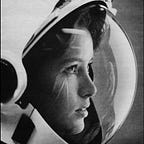The Black Hole Bomb
How we could make the universe’s most powerful weapon of mass destruction
We open with the young and awkward universe, housing mostly flouncy clouds of gas and dust. Primitive space is hot and beginning to fill with the first huge primordial stars. These will come to be known as Population III stars. They are made in large part of hydrogen and helium. As these stars die their remnants give way to heavier elements, smaller stars, and successive supernova explosions out of which black holes rise like dark oil from the brown, fertile earth. In this early universe begins the blueprint for the cosmos. Large collections of matter take the form of galaxy clusters. Within these clusters are the individual galaxies themselves replete with their pendants of planetary systems, stars, moons and rogue celestial bodies. And there is something every single one of these objects has in common, from the most luminous star to the most unremarkable asteroid.
They all spin.
Recent research suggests that the young universe was spinning around multiple axes and this rotation — or “angular momentum” — was passed down to all objects formed thereafter. The idea is similar to how the sun and planets in our Solar System rotate in the same direction because they were all formed from the same initial cloud. The exceptions to this are the…
